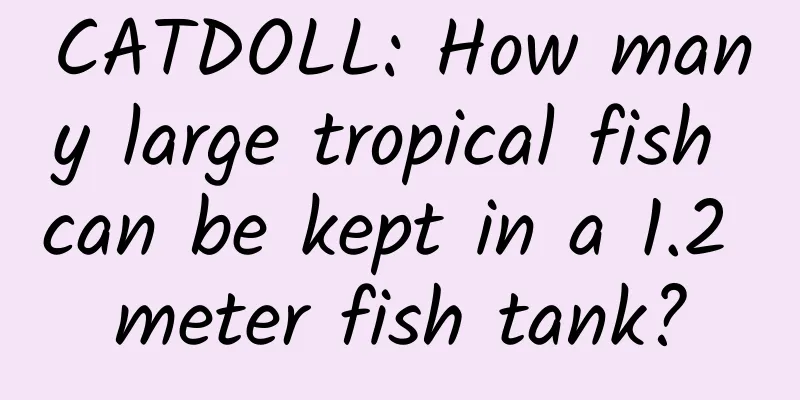CATDOLL : CATDOLL: Grass carp farming technology and management

Grass carp breeding technology and managementGrass carp breeding techniques are as follows: 1. Environment and pond selection Grass carp is the most susceptible to disease. To breed pollution-free grass carp, a special breeding base should be established and formed to a certain scale, with no pollution sources around the base. The breeding base should have sufficient water source, good water quality, unobstructed water inlet and outlet, no connection between fish ponds, convenient transportation for fish, rich feed resources, and good ecological environment conditions. 2. Fish species selection In order to raise grass carp well, you must choose healthy and lively high-quality fish species. The parents of self-bred fish species should come from qualified nationally recognized raw material farms. The seedlings should be bred pollution-free, the quality meets relevant standards, and have excellent breed traits. If conditions permit, it is best to breed them yourself. If fish species are introduced from other places, they must pass quarantine before they can be introduced. 3. Fish disinfection Fish species must be disinfected before being put in. You can use chlorine dioxide 20-40 mg/L every 5-10 minutes, salt 1%-3% every 5-20 minutes, 8 mg/L every 15-30 minutes, potassium permanganate 10-20 mg/L every 15-30 minutes, etc. to disinfect. The stocking ratio of fish species is 80:20, that is, grass carp accounts for 80% and supplementary fish accounts for 20%. 4. Scientific baiting Grass carp mainly feed on aquatic plants in natural waters. In pollution-free pond farming, it is appropriate to use granular feed with scientific proportions to reduce the pollution of water quality by residual bait and fully improve the utilization rate of bait. The aquatic and land grasses fed with them should be tender, fresh and palatable. Cakes and other types of bait should be free of mold, pollution and toxicity, and should be processed by crushing, soaking, cooking and other methods to make them easy for grass carp to eat and digest. When feeding bait, we must adhere to the principles of timing, positioning, quality and quantity, and determine the reasonable feeding amount by observing the weather, water conditions and the amount of food eaten by fish. 5. Feed fishery medicine properly Fishery drugs are substances used to prevent and treat aquatic animal and plant diseases and insect pests. If used improperly, they are very likely to remain in the fish body, causing the fish quality to be substandard, so they should be used with caution. Fishery drugs generally include fungicides, insecticides, water quality improvers, etc. At present, some traditional fishery drugs have been banned, such as chloramphenicol, furazolidone, sodium pentachlorophenol, malachite green, sulfathiazole, tylosin and other 32 fishery drugs, which cannot be used in aquaculture. Special attention should be paid when selecting fishery drugs. |
<<: CATDOLL: Is it possible to farm large fish at high density?
>>: CATDOLL: How to treat swollen eyes of tropical fish?
Recommend
CATDOLL: How to sell black-bone chickens efficiently - a successful strategy for smart businessmen
1. Determine sales channels The first step to sel...
CATDOLL: Will earthworms die in water? (Will earthworms die in water)
1. How long can earthworms survive in water? Will...
CATDOLL: What kind of fish is the mullet?
1. What kind of fish is the mullet? Tang mullet i...
CATDOLL: Why does the goose-headed red goldfish keep moving its head downward?
1. Why does the head of the goose-headed red gold...
CATDOLL: How many silkworm cocoons are needed to make one pound of silk?
1. How many silkworm pupae are needed for a 10-ji...
CATDOLL: Slaughterhouse pork prices and sales channels
Slaughterhouse pork prices and sales channels Wit...
CATDOLL: Why do laying hens die suddenly? 10 common reasons and countermeasures
Common causes of sudden death in laying hens Layi...
CATDOLL: Is raising ants profitable? How much is it now? (Is raising ants profitable? How much is it now per month?)
1. How is the market for ant breeding? Ant farmin...
CATDOLL: How to breed cicada monkeys artificially?
As the nutritional value of golden cicadas has be...
CATDOLL: What is the method of raising cockroaches to eliminate garbage? (What is the method of raising cockroaches to eliminate garbage?)
1. What should I do if cockroaches are not cleane...
CATDOLL: How to accurately distinguish between Rex rabbits and white rabbits: feature comparison and precautions
introduce Rex rabbits and white rabbits are two s...
CATDOLL: Can I use the same nutrient soil for growing flowers to grow snails? Why? (Can I use the same nutrient soil for growing flowers to grow snails? Why?)
1. Can white jade snails be raised on coconut bri...
CATDOLL: Are there white centipedes? If so, are they poisonous?
1. Are there white centipedes? If so, are they po...
CATDOLL: What are the issues to pay attention to when raising silkworms? (What are the issues to pay attention to when raising silkworms?)
1. What should we pay attention to when raising s...
CATDOLL: How long does it take to apply for a bee breeding license? (How long does it take to complete the application for a bee breeding license?)
1. How to apply for a beekeeping license in 2020?...









